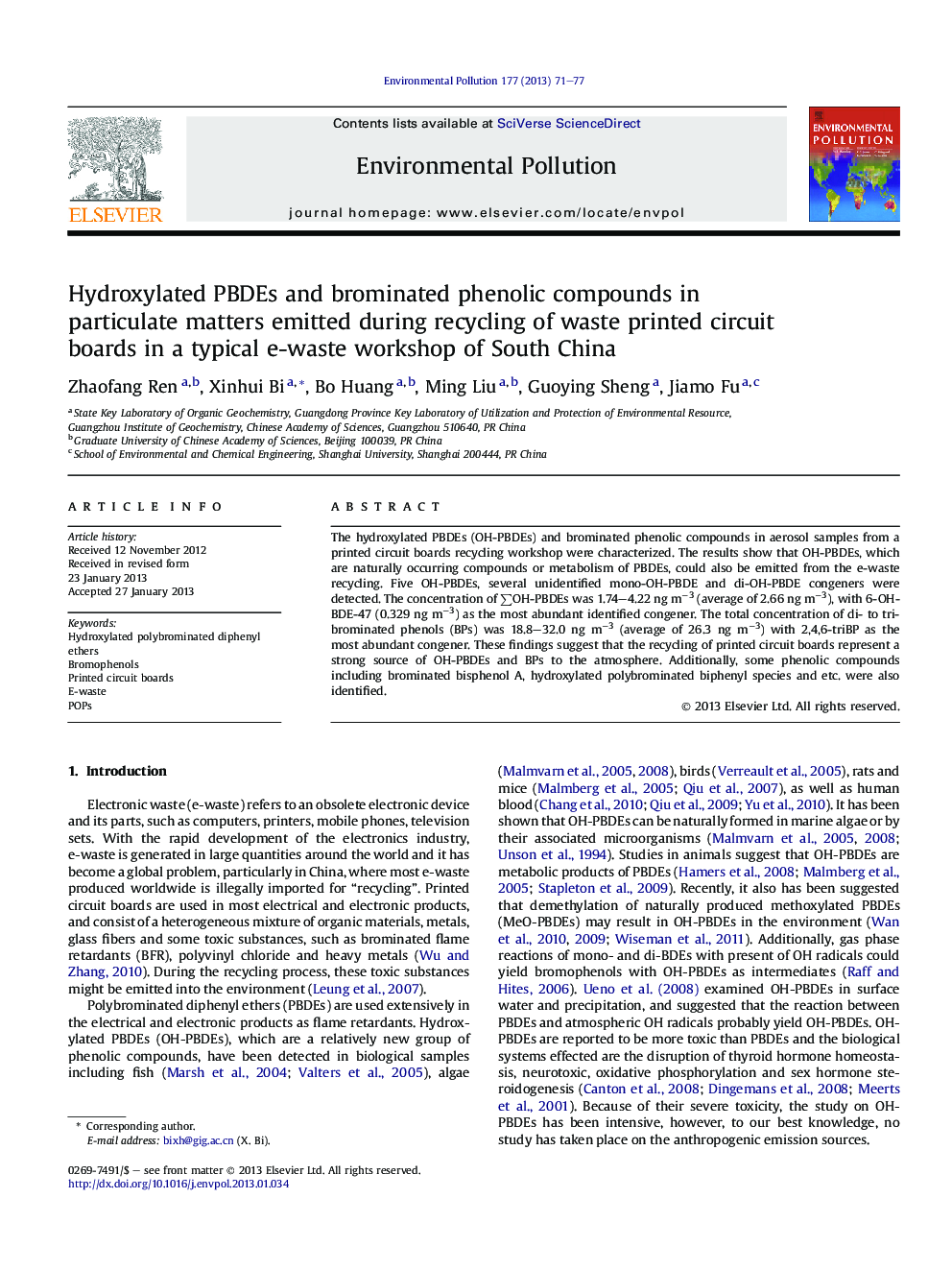| Article ID | Journal | Published Year | Pages | File Type |
|---|---|---|---|---|
| 4424613 | Environmental Pollution | 2013 | 7 Pages |
The hydroxylated PBDEs (OH-PBDEs) and brominated phenolic compounds in aerosol samples from a printed circuit boards recycling workshop were characterized. The results show that OH-PBDEs, which are naturally occurring compounds or metabolism of PBDEs, could also be emitted from the e-waste recycling. Five OH-PBDEs, several unidentified mono-OH-PBDE and di-OH-PBDE congeners were detected. The concentration of ∑OH-PBDEs was 1.74–4.22 ng m−3 (average of 2.66 ng m−3), with 6-OH-BDE-47 (0.329 ng m−3) as the most abundant identified congener. The total concentration of di- to tri-brominated phenols (BPs) was 18.8–32.0 ng m−3 (average of 26.3 ng m−3) with 2,4,6-triBP as the most abundant congener. These findings suggest that the recycling of printed circuit boards represent a strong source of OH-PBDEs and BPs to the atmosphere. Additionally, some phenolic compounds including brominated bisphenol A, hydroxylated polybrominated biphenyl species and etc. were also identified.
► OH-PBDEs and BPs were abundant in the PM from printed circuit boards recycling. ► The patterns of OH-PBDEs and BPs were different from that in biotic environment. ► 6-OH-BDE-47 was the most abundant identified OH-PBDE congener. ► 2,4,6-triBP was the most abundant BP congener. ► Possible formation mechanisms of OH-PBDEs and BPs were discussed.
